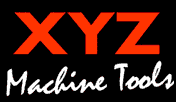Mitre Industries success has been built around its fabrication and sheetmetal expertise, which covers diverse areas such a jigs and fixtures, storage systems, duct work and materials handling systems. Therefore, while it was well equipped when it came to bending, folding, rolling and welding, it had very limited machining capacity; relying on sub-contractors as and when required. The downside to this was that it often found itself at the back of the queue due to its low-volume and infrequent requirements. Therefore, when it won a large contract that would be subject to tight deadlines the decision was taken to invest and bring machining in-house, which it did by working with XYZ Machine Tools.
“The risk of relying on a sub-contract machinist to meet our deadlines was too great and it would have been a gamble we were not willing to take,” says David Butcher, Director, Mitre Industries. “Our suppliers had always delivered to the highest quality, but we recognised that we were well down the pecking order when it came to getting work done, which was a situation we fully understood. At the time my son Andy, a skilled machinist, was looking for a new challenge so that provided the perfect opportunity to bring him on-board along with some new machining capacity.”

Andy Butcher is managing the introduction of machining at Mitre Industries with the two XYZ machines generating new opportunities as well as handling existing workloads.
Time then became the critical factor as machining needed to commence fairly quickly. An order was placed for an XYZ SMX 3500 bed mill, which was installed around three weeks later once space had been created for it. This machine was intended to cover the majority of the machining on this new contract, with its 1372 by 356 table size, along with axis travels of 787 by 508 by 500 mm (XYZ) and its ProtoTRAK control being capable of covering most of the work. However, the initial contract increased and the need for additional capacity became apparent. In discussion with XYZ’s area Sales Manager, Martyn Jones the decision was taken to bring in an XYZ 1000 LR vertical machining centre.
“The XYZ 1000 LR has given us greater flexibility and the ability for me to run jobs that benefit from the toolchanger, while I continue to operate the SMX 3500,” says Andy Butcher. “The step-up from the ProtoTRAK control to the Siemens 828D control was straightforward and, so far, I haven’t had to make use of any of the free training offered by XYZ, we may well just keep that in-hand for when we take on new operators.” The XYZ 1000 LR is the largest of XYZ Machine Tools’ linear rail machines and benefits from axis travels of 1000 by 500 by 500 mm (XYZ) with feedrates up to 20 m/min in all axes. Performance is enhanced by the 18 hp (13 kW) 8000 revs/min BT 40 spindle and the standard 20 position carousel toolchanger (24 position arm-type is an option). “The toolchanger was critical for me as it allows me to block out work or do one-off prototypes on the SMX while the LR is running production work, with full confidence that the job will be finished just as expected at the end of the cycle.”

“Andy had some experience of XYZ machines from his previous employer, so we had confidence that they could deliver what we wanted. From my perspective as a non-machinist they have proved to be a shrewd investment delivering a cost-effective and speedy solution to our machining requirements. A further benefit is the quality of work that Andy is able to produce. This hasn’t gone un-noticed by our customers and is leading to more machining work, so we are entering a win-win situation as we have the capacity to spare now that we have the XYZ 1000 LR and also the ability to be highly competitive in the type of work we are being asked to produce,” says David Butcher. That work may not normally be considered ideal for a machining centre, as typical batch sizes are anything from one-off to 20-off, but Mitre Industries is finding the XYZ 1000 LR with its Siemens control extremely efficient due to the ease of set-up , mixed with the ability to import files through offline CAM system without any issues with post-processing.
